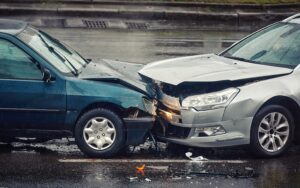Accidents on Million Dollar Highway
Request Free Consultation The Million Dollar Highway, a breathtaking stretch of road that winds through the San Juan Mountains in Colorado, is known for its stunning views and treacherous driving conditions.
The Million Dollar Highway, a breathtaking stretch of road that winds through the San Juan Mountains in Colorado, is known for its stunning views and treacherous driving conditions.
This 25-mile section of U.S. Route 550 between Silverton and Ouray has earned its nickname due to the cost of construction and the potential dangers faced by those who traverse it.
Did a crash on the Million Dollar Highway hurt you or your family? Our Longmont personal injury attorneys at Fuicelli & Lee Injury Lawyers Injury Lawyers helped hundreds of clients recover the compensation they deserved. We can help you too. Call us now for your free consultation.
Schedule a Free Consultation Today!
Table of Contents
- The History of the Million Dollar Highway
- Hazards of the Million Dollar Highway
- Most Common Types of Accidents on Million Dollar Highway
- What to Do After an Accident
- Contact a Personal Injury Lawyer Today
The History of the Million Dollar Highway
The Million Dollar Highway was constructed in the late 1880s as part of the toll road connecting Ouray and Ironton. The road was built to support the mining industry in the region, providing a means for transporting ore and supplies.
In the early 1920s, the highway was upgraded and incorporated into the state highway system, becoming part of U.S. Route 550.
The exact origin of the Million Dollar moniker is uncertain, but some believe it refers to the actual cost of construction, while others attribute it to the amount of gold ore used to fill the roadbed. Another theory suggests that the name stems from the million-dollar views offered by the highway’s stunning mountain scenery.
Hazards of the Million Dollar Highway
The Million Dollar Highway is notorious for its narrow lanes, steep cliffs, and lack of guardrails, making it one of the most dangerous roads in the United States.
The following hazards contribute to the high number of accidents on this stretch of road:
- Narrow lanes: The highway’s lanes are often barely wide enough for two vehicles to pass each other, leaving little room for error.
- Steep cliffs: The road winds along the edge of sheer cliffs, with drops of up to 1,000 feet in some areas. The lack of guardrails in many sections makes it all too easy for vehicles to plummet off the side of the mountain.
- Sharp curves: The Million Dollar Highway is full of sharp, blind curves that require drivers to maintain a slow speed and stay alert at all times.
- Weather conditions: The high elevation of the San Juan Mountains means that weather can change rapidly, with snow, ice, and fog making driving conditions even more hazardous.
- Rockfalls: The unstable nature of the surrounding mountains means that rockfalls are a common occurrence, potentially blocking the road or striking passing vehicles.
- Heavy traffic: During peak tourist seasons, the Million Dollar Highway can become congested with vehicles, leading to increased chances of accidents.
Most Common Types of Accidents on Million Dollar Highway
The most common types of accidents on the Million Dollar Highway include:
Single-Vehicle Accidents
One of the most common types of accidents on the Million Dollar Highway involves a single vehicle leaving the roadway. The narrow lanes and sharp curves that characterize this stretch of road leave little room for error, and even a momentary lapse in attention can have devastating consequences.
When a vehicle veers off the road, it may crash into the mountainside or, in more severe cases, plummet off a cliff.
These accidents can be caused by a variety of factors, including driver distraction, fatigue, or inexperience in navigating challenging road conditions. The steep drops and lack of guardrails in many sections of the highway only serve to increase the danger posed by running off the road.
In addition to the potential for serious injury or death, single-vehicle accidents on the Million Dollar Highway can also result in significant property damage and lengthy road closures as crews work to clear the scene.
Head-On Collisions
 Another major risk on the Million Dollar Highway is the possibility of head-on collisions. The narrow lanes and blind curves that wind through the mountains make it all too easy for drivers to cross the centerline, especially when attempting to navigate tight turns at high speeds.
Another major risk on the Million Dollar Highway is the possibility of head-on collisions. The narrow lanes and blind curves that wind through the mountains make it all too easy for drivers to cross the centerline, especially when attempting to navigate tight turns at high speeds.
When two vehicles collide head-on, the results are often catastrophic, with a high likelihood of serious injury or fatality.
Several factors can contribute to the risk of head-on collisions on the Million Dollar Highway. In addition to the road’s inherent design challenges, drivers may also be impaired by alcohol, drugs, or fatigue, increasing the chances of drifting into oncoming traffic.
Poor weather, such as heavy rain, snow, or fog, can also reduce visibility and make it more difficult for drivers to stay in their lane.
Rear-End Collisions
Rear-end collisions are another common type of accident on the Million Dollar Highway, particularly during peak tourist seasons when traffic is heavy. These accidents occur when one vehicle crashes into the back of another, often as a result of following too closely or failing to react in time to sudden stops or slowdowns.
The steep grades and winding nature of the Million Dollar Highway can exacerbate the risk of rear-end collisions. Drivers may struggle to maintain a consistent speed or brake effectively on downhill sections.
Distracted driving, such as using a cell phone or admiring the scenic views, can also contribute to rear-end accidents by taking a driver’s attention away from the road and reducing their reaction time.
Motorcycle Accidents
While the Million Dollar Highway is a popular route for motorcyclists drawn to its stunning views and challenging curves, the unique characteristics of this road can also make it especially dangerous for those on two wheels.
Motorcycle accidents on the Million Dollar Highway can be particularly severe, as riders are more exposed and vulnerable to injury than occupants of passenger vehicles.
The narrow lanes and sharp turns that make the Million Dollar Highway so challenging for drivers can be even more treacherous for motorcyclists, who must navigate the road’s twists and turns with a smaller margin for error. The lack of guardrails and steep drops in many sections also increase the risk of a motorcycle running off the road or plummeting down a cliff.
In addition to the inherent challenges of the road itself, motorcyclists on the Million Dollar Highway must also contend with other hazards, such as wildlife, rockfalls, and adverse weather conditions.
To stay safe, motorcyclists should wear appropriate protective gear, maintain a safe speed, and be prepared to adapt to changing road conditions. They should also be especially vigilant for other vehicles, as drivers may have difficulty seeing motorcycles on the narrow, winding road.
What to Do After an Accident
Despite taking all necessary precautions, accidents can still happen on the Million Dollar Highway. If you find yourself involved in a crash, follow these steps:
Check for Injuries
After an accident on the Million Dollar Highway, your first priority should be to assess yourself and your passengers for any injuries. Due to the potential severity of crashes on this road, check for visible wounds, broken bones, or any signs of internal injuries, such as difficulty breathing or severe pain.
If you or anyone else has been seriously injured, call 911 immediately to request emergency medical services. Even if injuries seem minor, seek medical attention as soon as possible, as some symptoms may not appear until later.
When speaking with emergency responders, provide them with as much information as possible about the location of the accident and the nature of the injuries to ensure a prompt and appropriate response.
Move to a Safe Location
After checking for injuries, your next step should be to move your vehicle to a safe location, if possible. The narrow lanes and blind curves of the Million Dollar Highway make it particularly dangerous for disabled vehicles to remain in the roadway, as they may be struck by oncoming traffic.
Look for a nearby pullout, shoulder, or other safe area to park your vehicle while you wait for assistance.
If your vehicle is too damaged to move or if you cannot do so safely, turn on your hazard lights and set up warning triangles or flares, if available, to alert other drivers to your disabled vehicle.
Be cautious when exiting your vehicle, as the road’s narrow shoulders and steep drops can pose additional risks. If it’s safer to remain in your vehicle with your seatbelt fastened, do so until help arrives.
Call for Help
Once you’ve ensured your immediate safety, contact local law enforcement to report the accident and request assistance. On the Million Dollar Highway, the Colorado State Patrol typically responds to and investigates accidents.
When you call, provide the dispatcher with your exact location, a description of the accident, and any information about injuries or damaged vehicles.
In addition to law enforcement, you may also need to contact other emergency services, such as fire departments or tow truck companies, depending on the severity of the accident and the condition of your vehicle.
Local authorities can coordinate these services and ensure that the scene is cleared safely and efficiently.
Document the Accident

To support any future insurance claims or legal proceedings, it’s crucial to thoroughly document the accident scene.
Start by taking photos of the damage to your vehicle, including both interior and exterior views. Also, photograph any damage to other vehicles involved in the accident, as well as any relevant road conditions or signage.
If there are witnesses to the accident, collect their contact information, including names, phone numbers, and email addresses. Their testimony may establish the cause of the accident and support your account of events.
Additionally, note any nearby businesses or residences that may have security cameras that could have captured footage of the accident.
Contact Your Insurance Company
After documenting the accident, notify your insurance provider as soon as possible. Most insurance companies have specific procedures for reporting accidents. This may include filling out an online form, calling a dedicated claims hotline, or contacting your agent directly.
Provide your insurer with all the relevant details of the accident, including the date, time, location, and a description of what occurred.
Your insurance company will likely request copies of any police reports, medical records, and photos or videos of the damage. Cooperate fully with their investigation and provide them with the necessary documentation to support your claim.
Depending on the terms of your policy, your insurer may cover expenses such as vehicle repairs, medical bills, and rental cars while your vehicle is being repaired.
Consider Legal Assistance
If you’ve been injured in an accident on the Million Dollar Highway, consider seeking legal assistance from a personal injury attorney. Insurance claims and legal proceedings can be overwhelming to handle on your own, especially when you’re also dealing with physical and emotional recovery from the accident.
An experienced personal injury attorney can help you understand your rights and options and ensure that you receive fair compensation for your damages.
An attorney can handle communications with insurance companies, gather evidence to support your claim, and represent your interests in court if necessary. Additionally, an attorney can seek compensation for non-economic damages, such as pain and suffering, which may not be covered by insurance.
When choosing a personal injury attorney, look for someone with experience handling car accident cases and a track record of success in securing favorable outcomes for their clients. Many attorneys offer free initial consultations, allowing you to discuss your case and determine if they’re the right fit for your needs.
Remember, the statute of limitations for filing a personal injury claim in Colorado is generally two years from the date of the accident. It’s best to act now to protect your rights and ensure that you have the best possible chance of receiving the compensation you deserve.

Keith Fuicelli, Longmont Personal Injury Attorney
Contact a Personal Injury Lawyer Today
With the stunning views and challenging driving conditions, the Million Dollar Highway is a testament to both the beauty and the dangers of Colorado’s San Juan Mountains.
If you or a loved one was in an accident on the Million Dollar Highway, don’t hesitate to seek legal assistance. An experienced personal injury attorney can explain your rights and guide you through the process of seeking the compensation you deserve.
